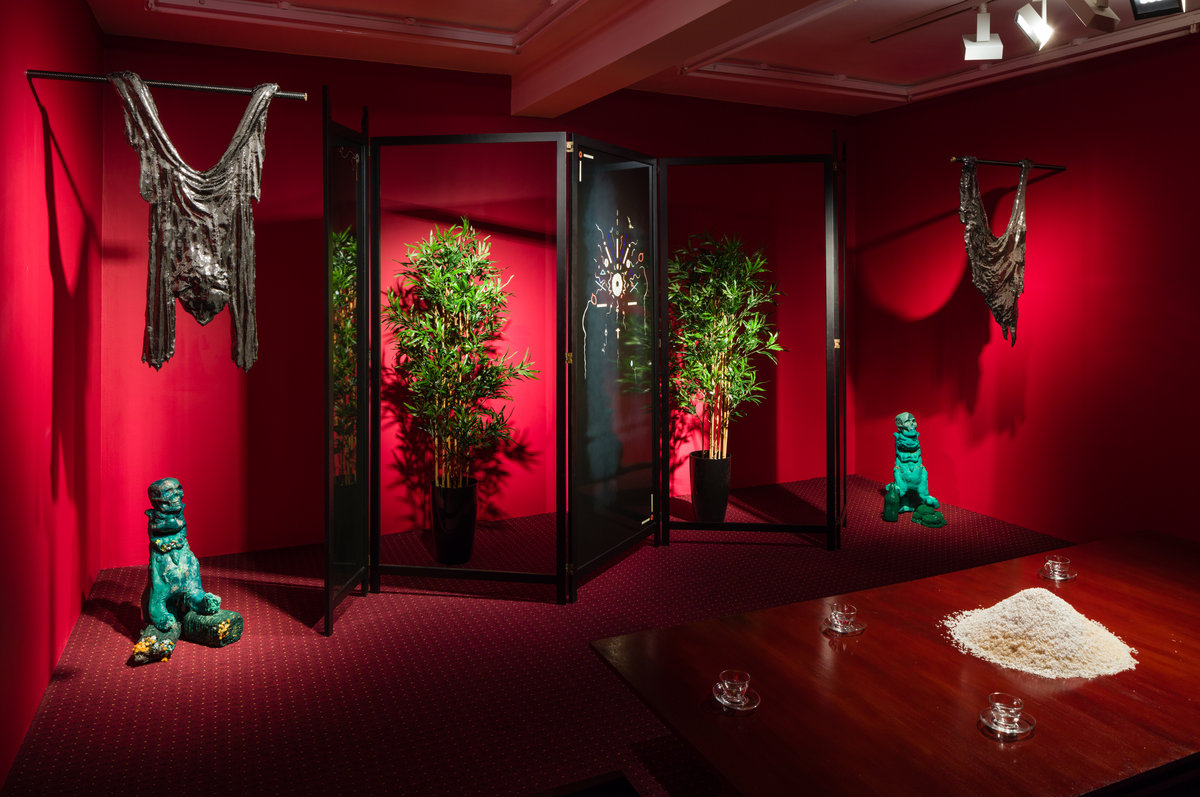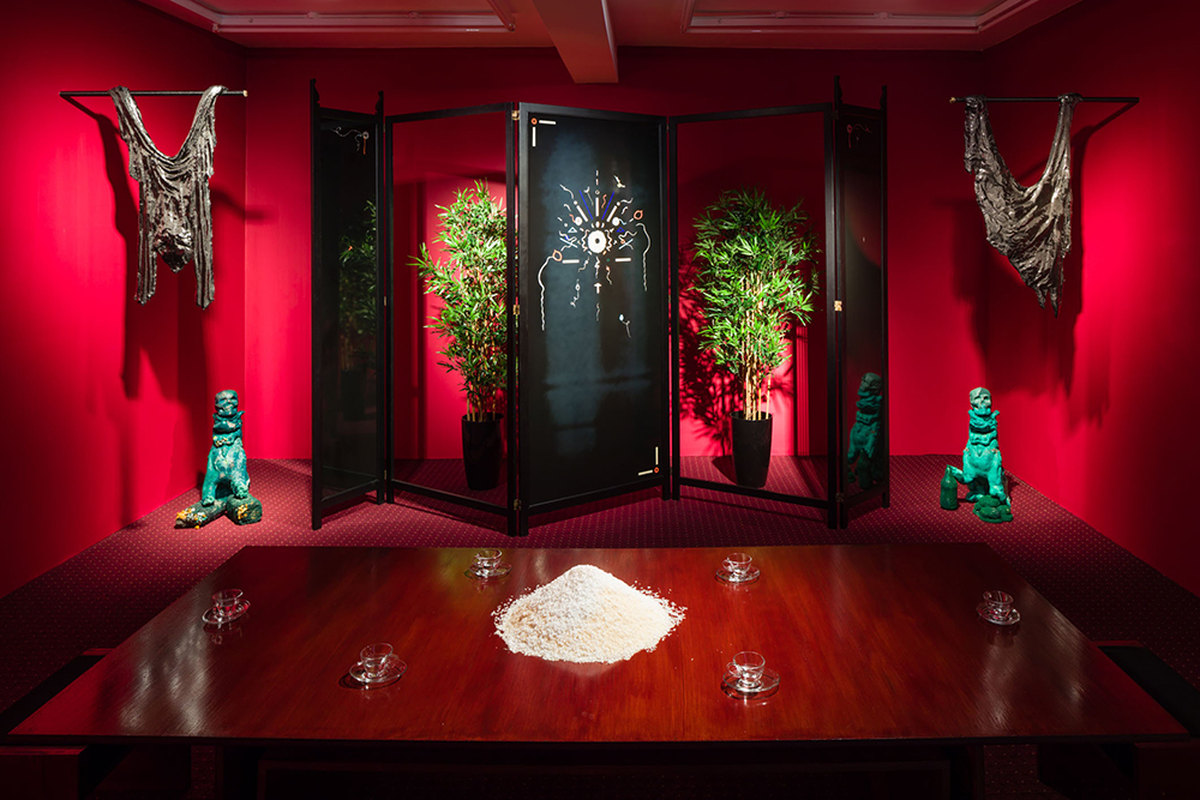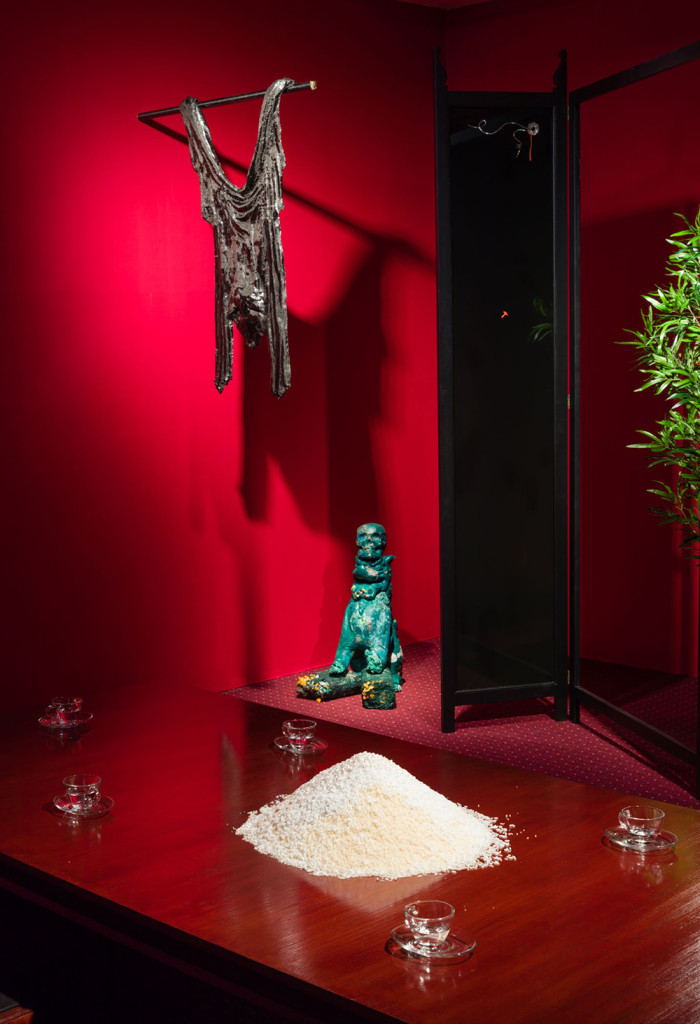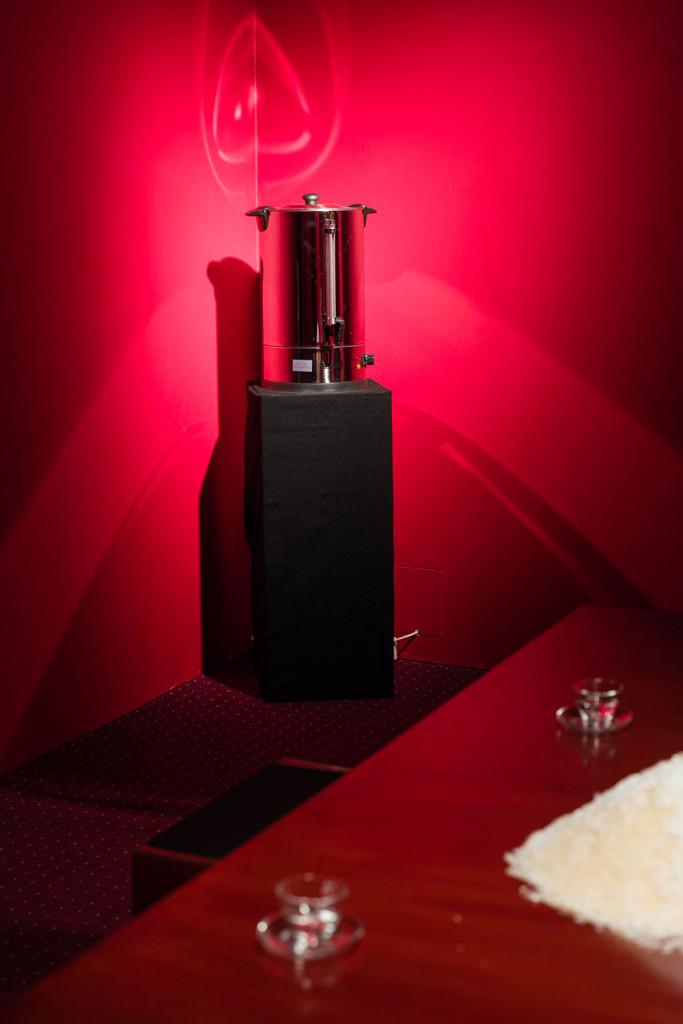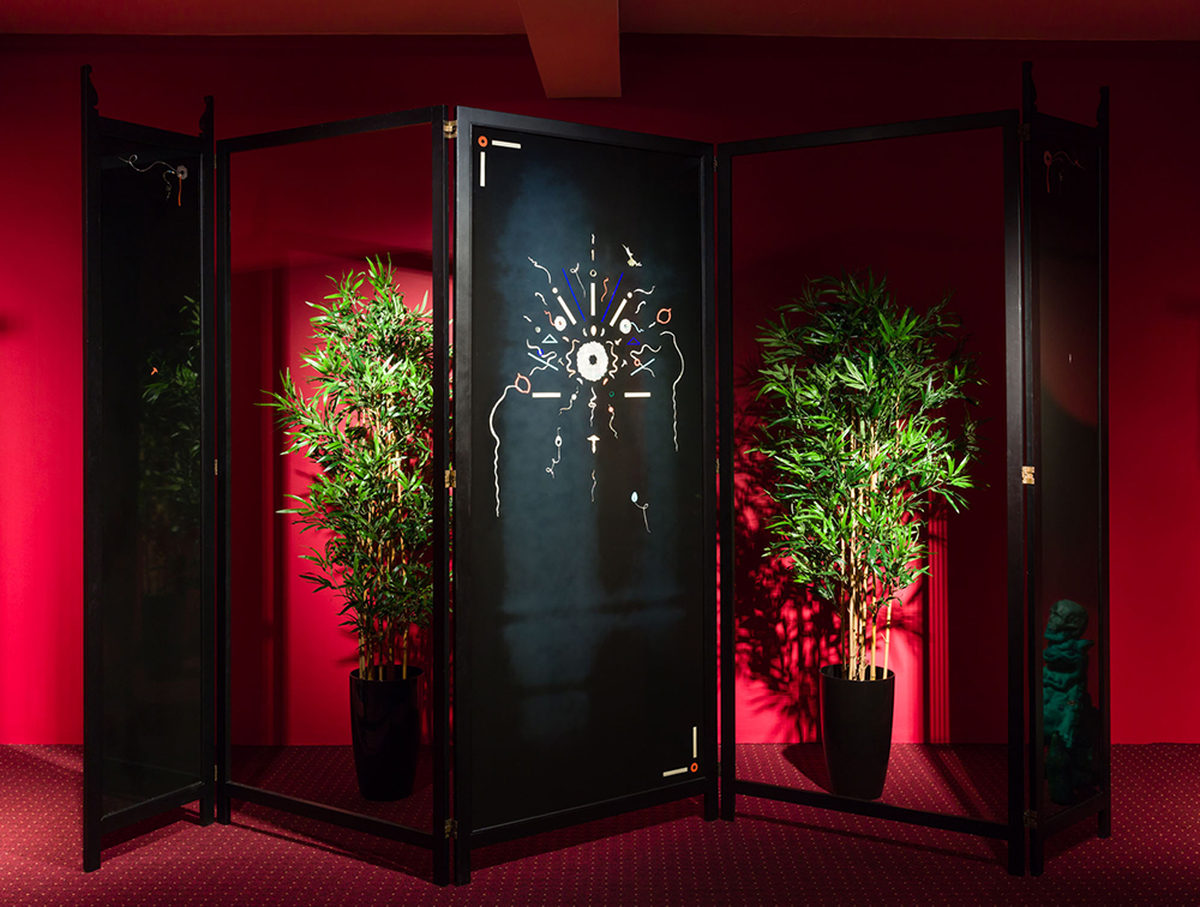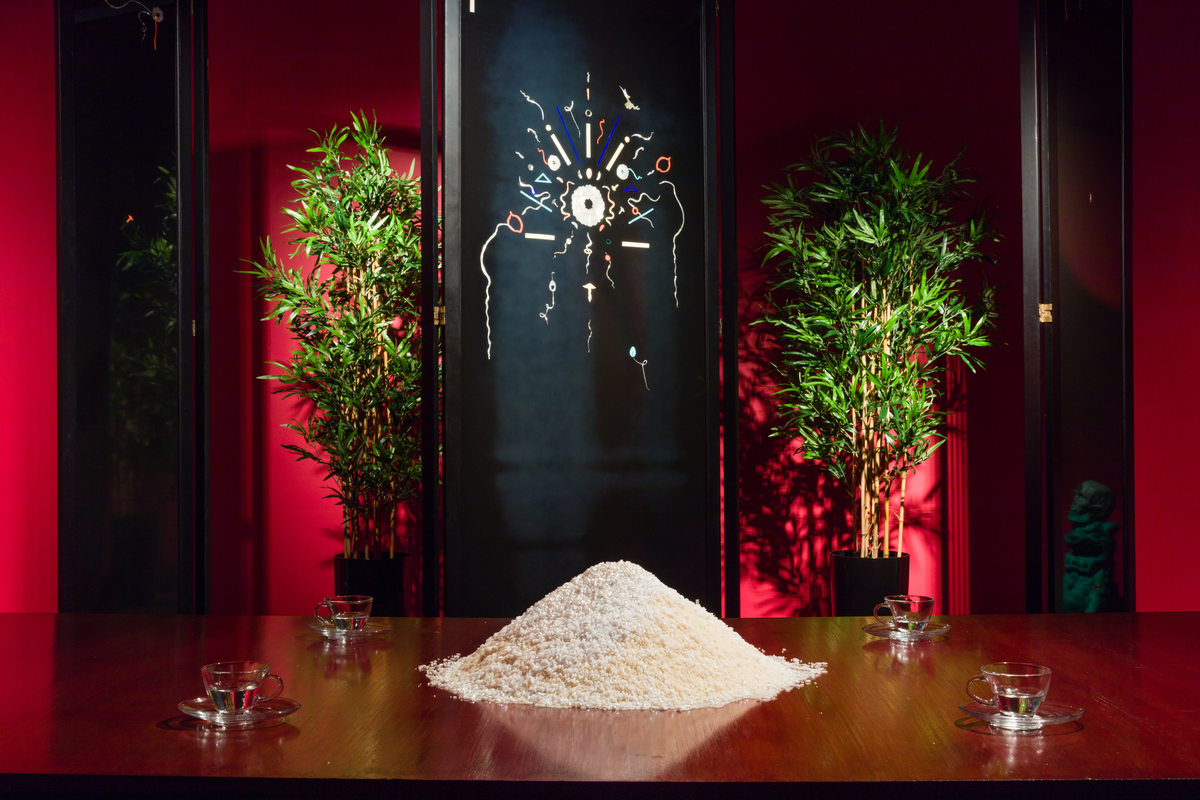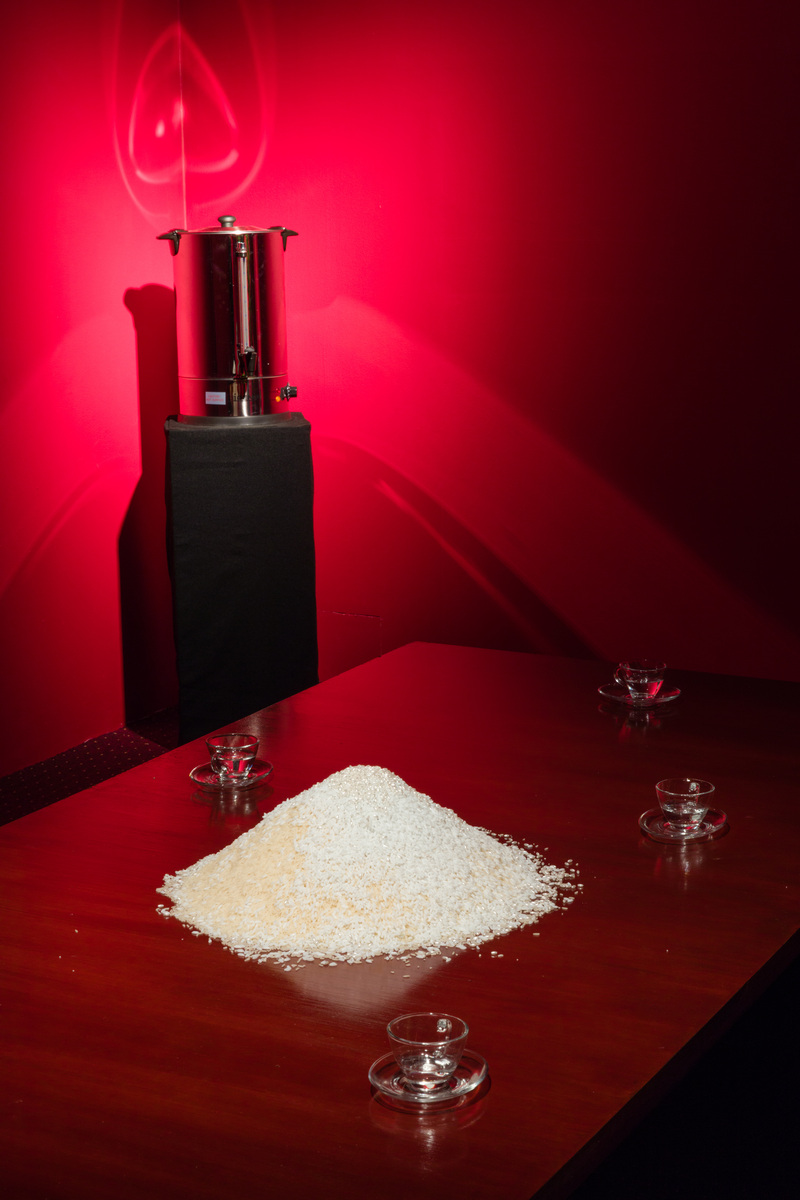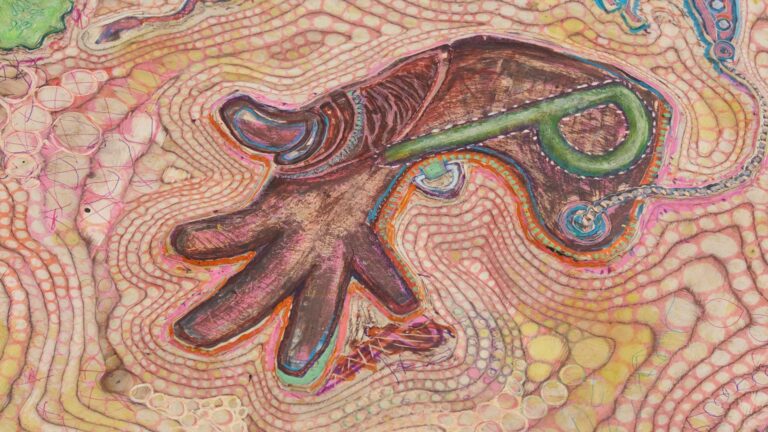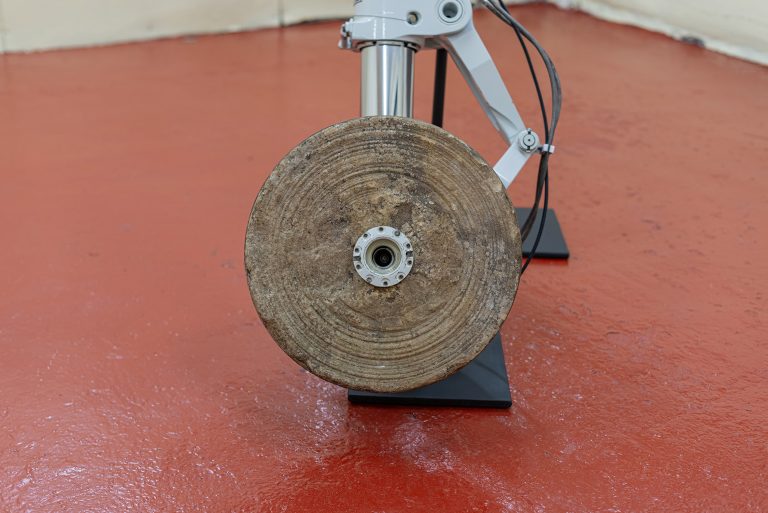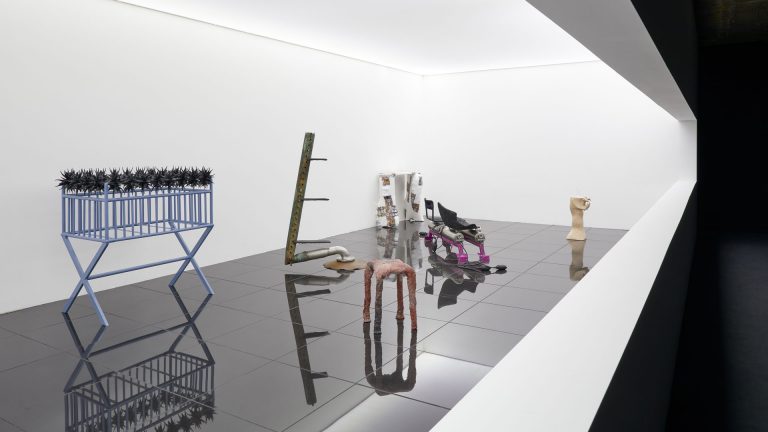Artists: Sean Raspet, Emanuel Röhss, Sean Townley, Zoe Williams, Amy Yao
Exhibition title: Esperanto
Curated by: CURA
Venue: Rowing, London, UK
Date: February 20 – March 19, 2016
Photography: Plastiques, all images copyright and courtesy of the artists, CURA and Rowing, London
Launching in the British culinary capital of London, ESPERANTO is the first multiethnic “Food of the World” restaurant chain founded by serial entrepreneur Mr. Bow. His vision for the start-up is clear: a unique blend of traditional fare and slow food. The secret sauce to its success? An innovative entrée of scented water for diners.
And if you’re still not convinced about this entrepreneur’s ambition, look no further than the array of upcoming restaurant openings he’s booked for Brussels, Rome, Paris, and New York!
Mr. Bow’s other innovative move is the dining environment, which he chose in order to recreate the look and feel of a cutting-edge “Food of the World” restaurant. By setting aside corporate color schemes, steel surfaces, designer lamps and open-plan kitchens that so often characterize today’s international restaurants, his hope is that ESPERANTO will return us to the authentic flavour of local, family-operated venues of the past, replete with lacquered furniture, booth seating, plants and gargoyles.
ESPERANTO launches in collaboration with artists Sean Raspet, Emanuel Röhss, Sean Townley, Amy Yao and Zoe Williams, assisted by CURA.’s international team together with Rowing.
The artists’ culinary philosophies draw on past experience in the kitchen, but also on their personal tastes and a penchant for games and provocation. The spirited character of Mr. Bow, his confidence as a restauranteur at times bordering on arrogance, is perceptible in the unique dishes and approach of the ESPERANTO dining experience.
A visit to ESPERANTO restaurant promises an unforgettable experience of the world of classic Chinese cuisine!
What will the risk-taking Mr. Bow offer up next?
http://esperantorestaurants.com/
Note from the curators
Reality is often manifested through representation. A frame, a screen, a narrative structure are the elements through which our perception of reality is activated. In this sense, the exhibition format enables us to recreate scenarios that are more vivid than reality itself. If the present remains impervious to the eye, and in the absence of a cohesive historical perspective, then fiction and reality become entangled across time and space; feeding into otherness. We can therefore imagine being here and elsewhere, now or before… We can also imagine the existence of a fictional character, the protagonist of our story. His name is Mr. Bow, and this is his story.
The tale of Mr. Bow
If Mr. Bow appeared in Italo Calvino’s “Cosmicomics,” not only would he be a fictional character, but, like the other bizarre, wandering dreamers of the story – beyond human. Mr. Bow, then, is the hero of a grotesque, paradoxical future, like a post-modern replica of the world we live in, recalled from a future where everything has already happened and cursed with an asymptotic “nostalgia for the present”.[1] In such a scenario, Mr. Bow is a barker of dreams. Not because of his persuasiveness or insight, but simply because he is moved by a visionary fervor. Within the dystopian and disorienting future in which he lives – a chaotic and non-static world – Mr. Bow’s dream is finally realised. “The world is flat!,” He states one day… That is, flattened, static, with no shadings, no smells, no tastes. Especially with regard to food, water and air…
Food is low-quality and tasteless, gobbled up and globalised, as economists say, by identical big chains serving sterile fast food (by then Next, a slow-food chain and the future of McDonald’s, will have monopolized the planet).
This is where Mr. Bow’s dream begins.
In a constant oscillation between truth and fiction, Mr. Bow’s tale draws upon two spheres simultaneously, using a double language, the insider world of food bloggers and the visionary character of an overambitious entrepreneur who through his business sets out to achieve a retroactive dream.
A return to tradition, to individual identities, to flavors, through the opening of small restaurants, featuring old-time national and local cuisines. Mr. Bow thus begins his adventure and opens his chain of “Food of the World” restaurants.
Yet he can’t shake from his mind an old essay by philosopher Jean Baudrillard[2], read who knows when and where, on the Chuang Tzu chef: “there is no need to see the whole ox, but to work on interstices.”
Therefore, Mr. Bow decides to start from absence to arrive at essence. Emptiness is a good canvas to start from. Everything is made from scratch, built as if it were true. But truer than what we could have ever imagined, “because [it] has already happened.” Hence, for the opening of Mr. Bow’s first Chinese restaurant, the characteristics of the place mingle with anomalies. He joins a dynamic team: Amy Yao, Sean Raspet, Emanuel Röhss, Sean Townley, and Zoe Williams. It does not matter that the philological reconstruction of the name does not work perfectly. The symbolic exchange does take place. We are in the midst of what James Berger has called a perspective retrospective. We are in a fiction, which seems more real than reality. It does not matter that the food is not what it used to be. We only know that in switching between fiction and reality we are always living in the two dimensions at once.
[1] Luca Briasco, “Postmoderni narratori apocalittici”, in Minima&Moralia, 25 nov. 2009.
[2] Jean Baudrillard, Symbolic Exchange and Death, SAGE Pubblications Ltd, 1993
Text compiled on the occasion of the show ESPERANTO curated by CURA. with Sean Raspet, Emanuel Röhss, Sean Townley, Amy Yao and Zoe Williams.
Sean Raspet, Maillard Process Simulation 0.1% in Water, 2016
Amy Yao, Bay of Smokes,
Sean Raspet, Maillard Process Simulation 0.1% in Water, 2016
Emanuel Röhss, Hunger, 2016
Sean Townley, CF/SG/NM, 2015
Emanuel Röhss, Hunger, 2016
Emanuel Röhss, Thirst, 2016



